#what is a wholesale market
Text
if i ever create a future au for duke that isnt torture (becoming batman) he would be a grower at a greenhouse... "are you just saying that because thats your career trajectory" he has light powers ok... plants need light...
#the real question is ornamental retail or wholesale vegetables. i think he could really corner the out of season vegetable production market#what with how much his power could save on supplemental lighting#although idk if it provides heat i dont think it does... so hed still have to pay for that i guess#were getting into unprecedented character projection here.#what if duke thomas ran a hydroponic tomato greenhouse. would that slay or what? [dead silence]#poison.txt#dc
10 notes
·
View notes
Text

A street view in Paris, Les Halles, which at the time was the main wholesale food market of the city. (1900's)
From: Les Halles: Inside photos of the bygone marketplace that was known as ‘The Belly of Paris’, 1956.
https://rarehistoricalphotos.com/les-halles-de-paris-photos/?fbclid=IwAR1zlP8sgbjq-6QzN3p0ZejRdjBrCCcGjXBgyz7ku7hT0MEqyMRyANJPbRY
#Paris#Les Halles#wholesale food market#1900's#Ancestors Alive#What is Remembered Lives#Memory & Spirit of Place#past times#those were the days#France#vintage photograph#marketplace#The Belly of Paris#1956#vintage photography
13 notes
·
View notes
Text

#stockmarket#ipo#banking#investing#100 days of productivity#bse#invest#memes#finance#mensfashion#stock market#investing stocks#who what wear uk#barang selalu ready stock#style tips#stockholm#stocktwits#affordable#new fashion#wholesale
0 notes
Text
Staying Fit in the Winter: The Benefits of Fitness Accessories
As the temperatures drop and the days grow shorter, it can be tempting to hibernate and avoid any physical activity. However, staying fit during the winter is just as important as it is during any other time of year. Regular exercise can help boost your immune system, improve your mood, and reduce stress levels.

DOWNLOAD CATALOG
Fitness accessories can help you make the most of your winter workouts. Here are just a few of the benefits:
Warmth: Fitness accessories can help keep you warm in cold weather. This is especially important for your extremities, such as your hands, feet, and ears. Look for accessories made from moisture-wicking fabrics to help you stay dry and comfortable.
Visibility: If you're exercising outdoors, it's important to be visible to other people. Reflective accessories can help you stay safe and seen.
Support: Fitness accessories can provide support for your joints and muscles. This can help you avoid injuries and improve your performance.
Motivation: Having the right gear can help you stay motivated to exercise. When you feel good and look good, you're more likely to stick with your workout routine.

Fitness Clothing Wholesale in USA
If you're looking for high-quality fitness accessories at wholesale prices, Fitness Clothing is a great option. We offer a wide variety of products, including:
Cold weather gear: Jackets, hats, gloves, scarves
Reflective accessories: Headlamps, vests, armbands
Support gear: Compression socks, knee braces, back supports
Motivation gear: Water bottles, music players, fitness trackers
We offer competitive pricing and fast shipping to businesses across the USA. Contact us today to learn more about our wholesale program.
#fitness accessories wholesale#fitness accessories wholesale uk#gym accessories wholesale market#fitness gear wholesale#gym accessories wholesale uk#custom fitness accessories wholesale#wholesale fitness accessories usa#what gym accessories do i need#fitness accessories list#fitness equipment wholesalers#fitness accessories shop near me#fitness accessories wala#fitness gear clothing wholesale#fitness equipment wholesaler in chennai#fitness equipment wholesale distributors#fitness equipment for wholesale#gym accessories wholesale#fitness equipment wholesale market#fitness equipment wholesalers near me#fitness accessories online
0 notes
Text
I really love the I Love Coburg account on Instagram, literally all it does is do little videos about businesses on Sydney Rd, Coburg, but it's so 🥺🥺🥺
#its a mix of feeling homesick for the Sydney Rd experience. and also seeing the business mentioned and being like oh! i went there!#the doctors practice. the butchers shop at the market. the charcoal kebab house. 🥺🥺 we need an al alamy profile next!!#also the greek cake shop!!!#about me#australia#melbourne#I'd also love a Sydney rd Brunswick account. i want to hear from all those bridal shops#A1 bakery profile. that one pizza shop that was clearly money laundering. the cheap & nasty fabric stores#bruswick IGA my beloved#also i wanna know what Brunswick Baths would say in a profile#Mediterranean Wholesalers. Franco Cozzo. and of course. the Moreland Hotel...#Moreland hotel my beloathed. literally surrounded by cigarette smoke & filled with pokie machines. also had a tram run into it.
0 notes
Text
Female Guidance in Aventurine's Life
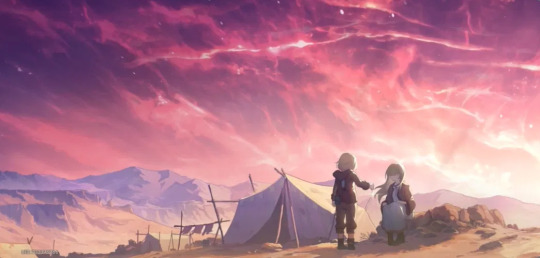
One thing I haven't seen discussed in much depth yet, but which I think is especially interesting, is the consistency of female guidance in Aventurine's life: Every single person who we have seen on screen offering Aventurine assistance or making a positive difference in his life is female (with one exception, yes, I'll get there).
Under the read more cause it's longggg:
Before even diving into his family, let's just get the obvious out of the way: Aventurine is, at least supposedly, blessed by a goddess. The very origin of his good fortune--be it actual blessing or curse--comes from the literal "mother goddess" who watches over him. This is one of the only instances in Star Rail where a god character is specifically given a gender, and Gaiathra is not ever ambiguous. She is the classic female fertility goddess with all the trappings of other famous triple goddess figures of the real world. Aventurine's personal belief in the goddess may be shaky, but he nevertheless continues to treasure his people's faith. Thus, at the core, we can say Aventurine is a character who is guarded by the most quintessential mother figure possible.
Now, with the most obvious out of the way:
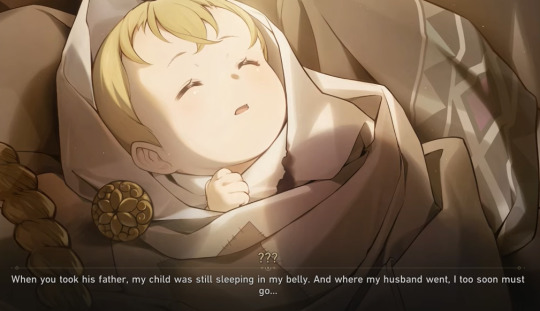
We know that Aventurine's father died before Aventurine was even born, and therefore he would not have any memories of his father, leaving him to be raised by his mother and sister.
Both women clearly made an enormous and lasting impression on Aventurine; they haunt every single one of his memories of Sigonia and are the key elements of the family Aventurine longs to return to. While he flirts with the concept of death as a way to see his family members again, it was also his mother and sister who instilled in him any sense of self-worth and meaning to his existence, the only things keeping him from giving up on living. His mother believed him to be blessed; his sister insisted to his face that not even the only remaining remnant of their mother had any value in comparison to his life.
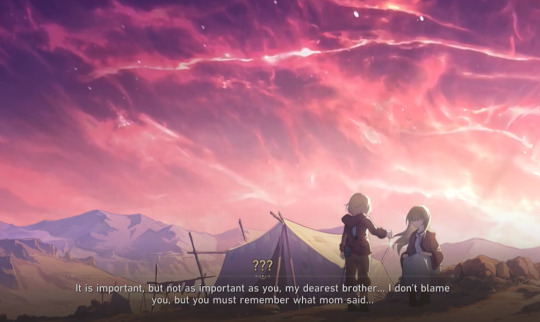
It is for his sister that Aventurine first begins expressing a self-sacrificial nature, and from his sister that this self-sacrifice is reinforced when she uses herself as a shield to help him escape massacre at the hands of the Katicans.
It is also from his sister that Aventurine learns many of the deeply meaningful actions he holds onto to the present day, despite having been so far removed from his own culture.
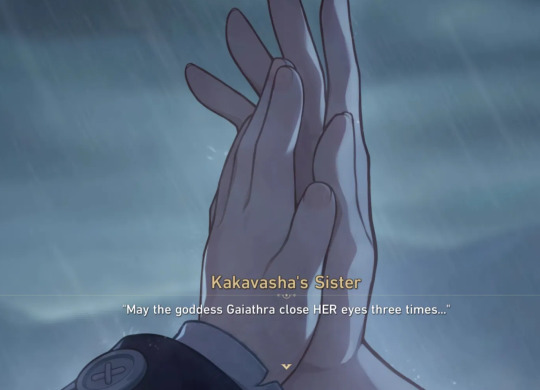
Conversely, every one of Aventurine's early negative experiences on screen appear to have been driven (at least primarily) by men.

Although the Katican tribe of course would have both men and women, the tribal societies on Sigonia appear to be on the fairly traditional side, with Aventurine's mother staying at the camp with her child while his father was the one to go out and hunt for offerings for Gaiathra. This is also supported by Aventurine asking Jade to take him to her "chief" later on. Therefore, it is likely (although of course not guaranteed) that a majority of the Katicans' army was male, and that Aventurine's early experiences with outsiders consisted almost entirely of indiscriminate pillaging and massacre at the hands of what the Avgin viewed as savage, invading warriors. In separate instances, Aventurine was traumatized by these warrior figures three times--first with the loss of his father, then his mother, and then finally his sister.

And even their hope, supposed to come in the form of the "men in black" from the IPC, completely abandoned them, leaving Aventurine once again betrayed by masculine figures that were supposed to be there to protect him. Led by Oswaldo Schneider, another cruel male authority figure, the Marketing Department of the IPC permitted the wholesale slaughter of Aventurine's people--something which we know Aventurine is now aware of.

Then, of course, the next piece of Aventurine's backstory we're given is his male slave master. I don't really need to say anything about this, do I? This man violated Aventurine's human dignity and bodily autonomy, and forced Aventurine's hand in a life or death battle for which Aventurine still punishes himself mentally, even years in the future.
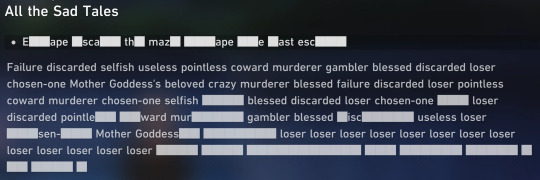
In part to escape the difficulty of his situation and rise to a position where he would have enough resources to--he thought--help his people, Aventurine joins up with the IPC. But when he attempts to make contact with a powerful man in the organization, Diamond, he is instead met by a woman, Jade, who against Aventurine's own expectations determines that she will raise Aventurine up (or use him as a tool, depending on how you currently choose to interpret Jade's motivations), granting him wealth and status beyond his imagination.
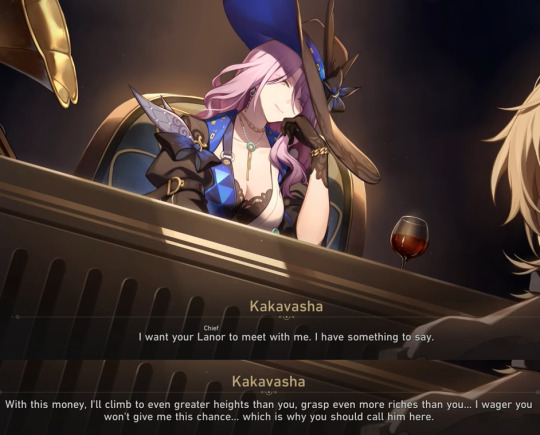
(And this line in particular is interesting, because you can take it one of two ways: 1) Aventurine comes from a patriarchal planet that traditionally put men into positions of power [thereby making his own slavery an emasculating act, aligning him further with disenfranchised women]; thus, he is making the assumption that to get anywhere in this organization, he will need to work with a man; or 2) He actually was counting on Jade taking his bet and helping him right from the beginning, because Aventurine perceives women as inherently more likely to protect and aid him than men would be.)
In the end, Jade does exactly as she claims she will, launching Aventurine into a position of power while also closing golden handcuffs around his wrists. She positions herself not only as his supervisor, but as his advocate and ally. She entrusts him with her Cornerstone, a sign of significant faith in his abilities. She even seems to be keenly aware of his bias towards the mother figure, referring to him as "child" in their conversations.

Whether this is genuine or a manipulation tactic can certainly be debated (and I'm not inclined to think at this point that Jade is a genuinely good role model or selflessly supportive person in Aventurine's life), but whatever the case, women are the only people Aventurine even remotely considers to be "in his corner."
We see this even earlier, in Aventurine's call to Topaz. Like with the example of his mother and sister, Aventurine trusts in Topaz's ability implicitly, and considers her above anyone else when it comes to completing the mission in Penacony.

Although of course we don't know if Aventurine has any other friends or allies among the Strategic Investment Department, it seems very likely that Topaz, yet another woman, is the one he is closest with. At the very least, she is the only IPC character (so far) that Aventurine has a complimentary voice line for, one that shows his respect for her talent:

Over and over again, the story aligns Aventurine with female figures in positions of authority, and demonstrates that he is comfortable (although maybe not too comfortable, in the case of Jade) with relying on them and trusting their judgment, just as he did with his mother and sister.
And this pretty much goes off the charts in Penacony, where Aventurine has more involvement with the female cast than virtually any other non-female character (even the Trailblazer!). We set the pattern off right away, with Aventurine immediately being placed into a negotiation situation with Himeko, respecting her role as the Express's leader and working to get himself aligned with the Express by acquiescing to her request for support.
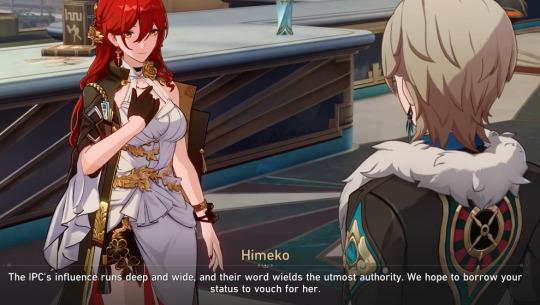
Then there's the fact that Aventurine is the one who finds Robin's body, an event which, although he didn't let it show too much, was almost certainly traumatic for him, given the violent death of his own sister.
Next, twice in Penacony's story, we see Aventurine seek out Sparkle for information. He may not personally like her and her comments may be both racist and dehumanizing, but Aventurine does rely on her--being the only character explicitly seeking her aid, which no one else in Penacony seems to want.
In 2.0...

And in 2.1.
Now, say it with me, guys: Aventurine built an entire portion of his grand plan around the idea that if he looked pathetic enough, a female character would absolutely come and help him. And sure enough, the women come through for him, always! Sparkle gives him the exact last clue he needs to confirm his belief that he could use "Death" to reach the true Penacony, sealing the deal for the rest of his plan.
His plan which also hinged significantly on Black Swan's involvement too, another woman that he views as, if not trustworthy, then at least intelligent and hyper-competent.
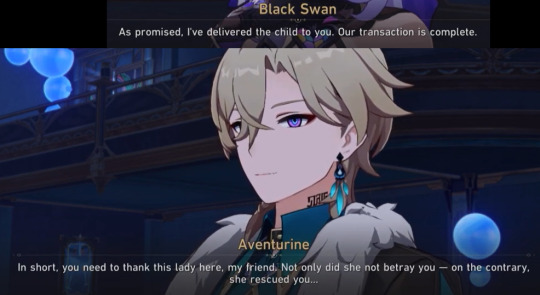
Contrast all this, of course, with the treatment Aventurine receives at the hands of Sunday, the lone opposing male character he faces in Penacony.
Sparkle implies that Sunday would humiliate Aventurine in an unmistakably sexual and degrading way, and Sunday himself professes this same desire to see Aventurine humiliated.
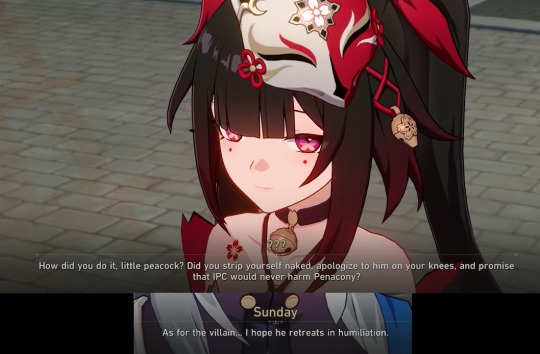
Then we're "treated" to the moment in which Sunday uses the Harmony's (or perhaps actually the Order's?) power against Aventurine, in a scene which is supposed to reflect an interrogation but is also, very clearly, another nonconsensual violation of Aventurine's bodily autonomy and dignity by a man. While ostensibly seeking confirmation of the Cornerstone ruse, Sunday instead subjects Aventurine to unnecessary questions about his past on Sigonia, which recall and force Aventurine to re-endure memories of his trauma.

Even if this is what Aventurine prepared himself for and planned to have happen, the pain he experiences is very real, and he suffers both the physical and emotional consequences of Sunday's assault all the way up to his "Death" and possibly even beyond.
(Also, Sunday fans please don't get too up in arms with me for this; I also like Sunday! It's okay for characters to be morally grey!)
I think there's one other interesting example I would bring up here too, and that's Aventurine's conscious decision to weaponize his own masculinity against the Trailblazer. Through the 2.0 and 2.1 Trailblaze missions, Aventurine deliberately acts in an off-putting manner to the Astral Express crew, particularly the Trailblazer, in order to build up to the 2.1 climax where the Trailblazer is supposed to view him as an unrepentant villain and attack him without hesitation.
In order to achieve this uncomfortable, villainous effect, what does Aventurine do? Exactly what other men have done to him.
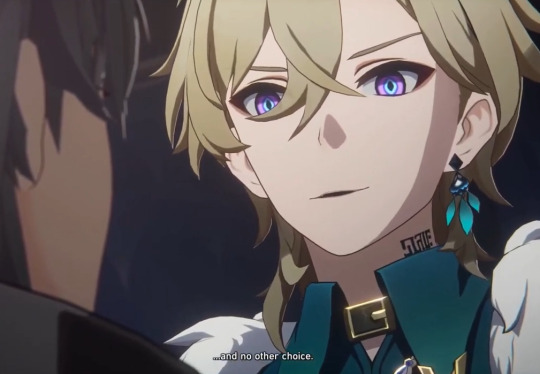
This is especially apparent if you're playing Stelle because of the ingrained societal taboo of a man entering a woman's personal space without consent, but even as Caelus, it is very clear that Aventurine is leveraging behaviors typically used to show dominance: In a complete 180 to all Aventurine's other body language in the game (normally quite withdrawn, frequently in defensive postures with his arms crossed or hand behind his back, almost always standing several feet away from other people), Aventurine violates the Trailblazer's personal bubble, looming over them (Caelus was sitting in this cutscene, lol), forcing eye contact, and commanding the space while informing them that they will have no choice.
For someone who was hunted, enslaved, had his movements restricted with chains, and due to his own slight stature has very likely been towered over by others who were intentionally asserting their power over him all his life, it is clear that Aventurine associates dominant, typically more masculine-coded physically-imposing behaviors with discomfort and even villainy.
Any girl who has ever had a man loom over her like this will realize very quickly: Aventurine wanted to make himself scary so he made himself act more like a bad man.
(Yes of course I know "not all men." I'm not saying every man behaves in this domineering way or that women cannot be domineering too, obviously, just that Aventurine had a very specific image in mind when constructing a "villainous persona," and the physically controlling tactics most typically used by aggressive men toward women was his immediate go-to.)

But where does that leave Dr. Ratio, the one male character actually on Aventurine's side?
Frankly, I don't want to derail my post about how intensely Hoyo chose to hammer on the message of "Women will protect you" in Aventurine's story with a discussion about a mlm ship, but the take-away here is going to lead in that direction anyway--so yes, Dr. Ratio is the exception.
What is interesting is that he does not come across as an exception at first, and in fact initially appears as another male character being rude and dismissive to Aventurine. Like, there are still people out there calling Ratio an unrepentant racist for this one.

Of course, it's later clarified that this is an act--likely even these insults were scripted specifically to give Sunday's spying ears the "insight" he needed to exploit Aventurine during the interrogation.
But even though it is an act, Aventurine still has noticeable trouble putting his faith in Ratio. He does genuinely doubt him a few times, despite knowing that they are working together to fool the Family.
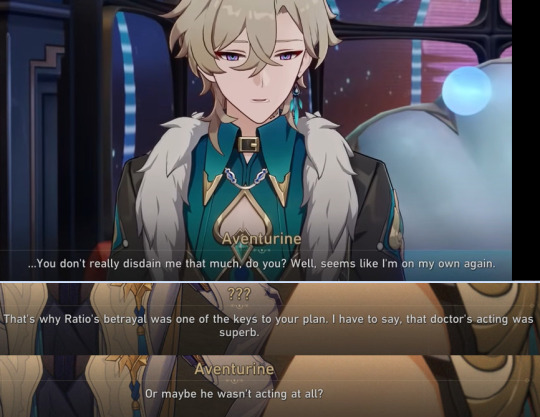
Even his voice line about Ratio confirms that he doesn't think Ratio particularly cares for him; rather, he thinks Ratio simply tolerates him because he's slightly less unintelligent than those around them.
Ultimately, the entire act with Ratio ends up being a mirror of the real scenarios Aventurine has been experiencing with men his whole life (at least as far as we are shown his life). Men abandon him to fend for himself (unwillingly, like his father, or willingly, like Diamond leaving Aventurine to deal with Penacony alone on the inside). Ratio keeps leaving Aventurine completely alone. Men attempt to humiliate him and violate his boundaries (like Sunday and his slave master). Ratio insults Aventurine's appearance and intelligence repeatedly. Men betray him (like Oswaldo Schneider and his men leaving the Avgin to die). Ratio "betrays" him.
I'm not saying when Aventurine devised the plan for their act, he consciously drew up a list of all the ways men had hurt him in the past and had Ratio re-enact them one by one, but like... that's what happened, whether or not Aventurine intended it.
And okay, the shrinking scene in Dewlight Pavilion was just for fun and probably only slightly fetishy, the devs promise; yes, it was supposed to be a joke! ...But it's also not a mistake that this is yet another instance of a male character in a glaringly metaphorical position of power over Aventurine. Aventurine's tiny in this scene! He's completely vulnerable! He's in a dangerous position and the male character could very much hurt him in this moment.

But Ratio doesn't. (In fact, his line here is supposed to be sarcastic, very ha ha--but also, what is Ratio really saying? "I won't do anything to you without your express consent." What a good guy.)
Virtually everything negative that we see in 2.1 is Ratio doing these things as an act at Aventurine's own request. He doesn't actually disdain Aventurine; his own voiceline about Aventurine reinforces that he sees Aventurine as talented and intelligent.
Whatever you think he was apologizing for in their early scene, he's the only person we're ever shown in-game apologizing to Aventurine at all.
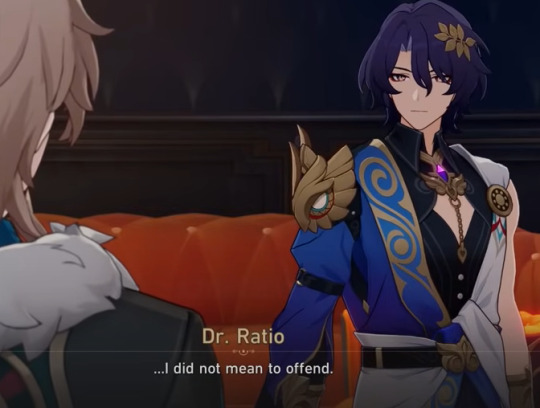
He worked hard to "betray" Aventurine but only as he was instructed to do, and immediately checks in on Aventurine's well-being afterward, even urging him to give up the plan if it becomes too much to handle.
And then, of course, there's the note: "Do stay alive. I wish you the best of luck."
After this point, it cannot be denied that Ratio is unequivocally on Aventurine's side, wants to help him, and is not doing so out of any sense of self-gain but largely because he is a good person who simply cares about Aventurine's fate. By the end of 2.1, it can no longer be doubted that Ratio is the exception to the "gender rule" of Aventurine's life, which--the story shows us again and again--was that guidance, protection, and care for Aventurine come from women, while men repeatedly represent dismissal, betrayal, or pain.
Ratio is, at least as far as Aventurine's story shows us, the proof that men can be good, that things are not as black and white in Aventurine's life as they might appear, and that--if you do choose to ship him with or see Aventurine as attracted to men--his attraction could be validated (and potentially reciprocated) by a male figure who would not bring additional harm to Aventurine's life. Aventurine makes the final decision to live after seeing Ratio's note--the exception to the rule ultimately proves to be the last piece needed to keep him alive.
But I promised I wasn't going to derail my own post about w o m e n, so let me get to the final point, and the one I really wanted to talk about: Although Ratio gets virtually all the credit for "saving" Aventurine in the fandom, Aventurine was actually saved by, you guessed it, another woman.

Not going to lie, the reason I started this post was specifically because I wanted to talk about how Acheron and Aventurine's dynamic was completely unexpected but actually fits flawlessly with the theme of feminine guidance in Aventurine's story.
Despite the fact that Aventurine made Acheron's life much harder and actively used her as a chip in his grand gamble, she doesn't blame or chastise him for those actions. Although she expresses some incredulity that Aventurine is actually that lucky, she then turns around and congratulations him for his ingenuity, immediately supporting him despite the fact that they don't even truly know each other.
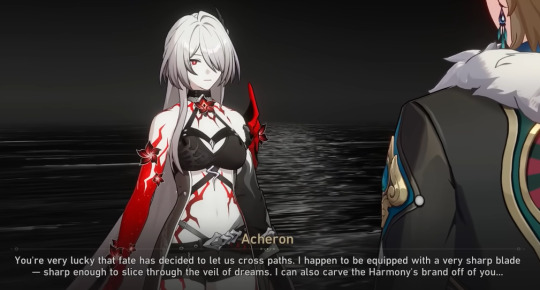
Then it gets even more interesting. Acheron, who frequently hits her companions with deep and sometimes very emotionally fraught questions, asks Aventurine: "Have you never wavered?"
We as players know for a fact that Aventurine is constantly wavering, constantly doubting himself, his luck, and whether he'll even live--or even wants to live--to see tomorrow. But we also know that Aventurine is not forthcoming about those truths, refusing to express them to anyone, even himself. The only way we hear those dark truths is through his "future" self (who by the way, is once again another male figure cutting Aventurine down--of course it's himself but it's also, from the player's perspective, once again reinforcing the message that he isn't going to find safety or kindness in an adult male presence). Aventurine almost constantly deflects and diverts when his emotions or struggles are brought to the fore (unless he's divulging them for the specific purpose of allowing someone else to weaponize them). "I'm fine," he says, like a lying liar who lies.
But he doesn't lie to Acheron.

He chooses to be completely candid with her, to lance open the deepest wound of his life--that he can win and win and win and still have lost everything. The glitz and the glamour has all been stripped away here, at the end of everything, and Aventurine finally feels safe enough to admit that he fears he has absolutely nothing in his life worth living for.
And then, we get this direct parallel: Aventurine looks to Acheron, the woman now before him, for guidance, for explanation, exactly as he looked to his sister in the past.

He needs help, he needs answers, and he is continually seeking that help from the female figures in his life, whose support and kindness echo the lost care of his mother and sister.
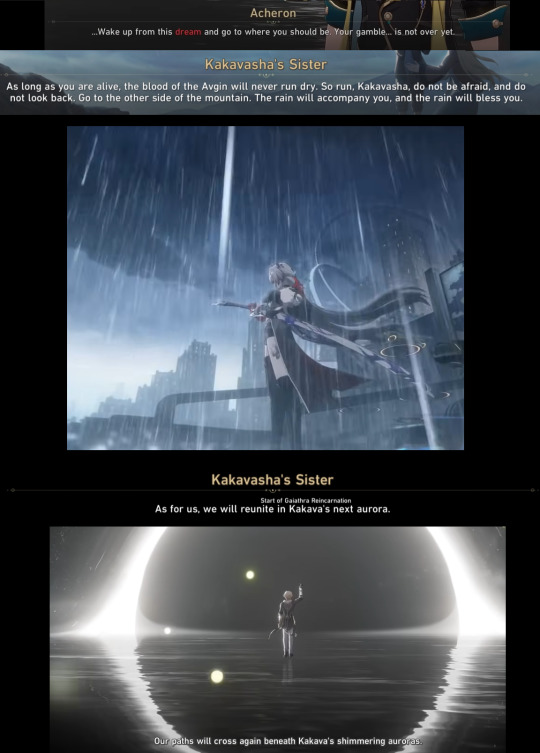
"Go where you should be," Acheron tells Aventurine, guiding him across the river of death just as his sister insisted that he flee through the rain toward life.
Look guys, Acheron's even the one who reminds Aventurine to look at Ratio's note in the first place because apparently being an emanator of Nihility gives you x-ray vision, but my girl just gets no credit at all for being Aventurine's real savior, come on now!! Yes, Ratio's note was the final reminder Aventurine needed that someone would be waiting for him on the other side, but Aventurine would never have even gotten to the point of being willing to read that note if Acheron hadn't stepped in and provided him an answer to his question.
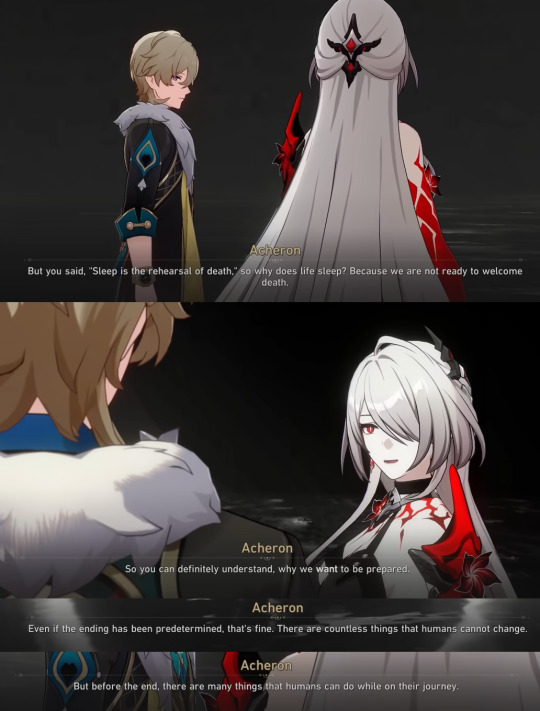
She feeds him back his own answer: "Why does life slumber? To rehearse the death for which we are not currently prepared." It is Acheron who reminds Aventurine that giving into the Nihility is pointless, and that rather than simply embracing a meaningless death, it is up to humanity itself to find and make meaning by living. It's this, not Ratio's note, that Aventurine gives as his reason for choosing to go on when asked by his own younger self. It's Acheron's words that finally give Aventurine an answer--why do we live just to die? Because there are people we can still make proud. Because when we go into death, we should do so with our heads held high, having achieved our own sense of purpose in this life.
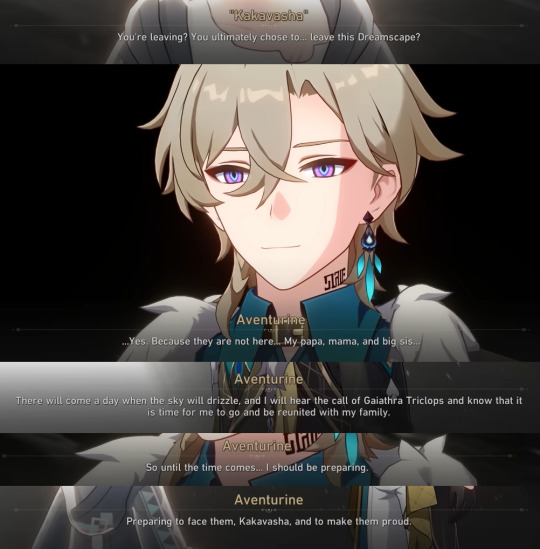
Ratio gave Aventurine a promise: Someone is waiting for you to come back.
But Acheron gave Aventurine a reason: If life is inherently meaningless, doesn't that just mean you are free to give it meaning yourself?
She saved him, as women have been saving him all his life.
Anyway, this has already been horrendously long, but really what I wanted to say is that I think it is absolutely fascinating how consistent Aventurine's writing is when it comes to portraying where his support comes from and who he seeks guidance from. (Psst, just in case you still haven't figured it out, it's women!) In virtually every instance we are shown, we see the message reinforced that women are Aventurine's greatest allies and role models, while male figures are continually positioned to intentionally or unintentionally let him down and cause him distress.
"But women playing the supporting role to a male character is nothing new, Star, why are you so excited by this?"
Because the role women are playing in Aventurine's life is not the subservient supporter and emotional crutch role that female characters all too often play to male counterparts. None of the women in Penacony or Aventurine's past were there to do the emotional labor for him, to be a trophy or prize, or to cater to his needs. They don't exist solely to help him fulfill his character motivations; they aren't following him around waiting for his next request as their only role in the plot.
Instead, with Aventurine's story, we almost have an inversion of gender roles, where the male character eschews the stereotypical "men are leaders, fighters, and stoic heroes" archetype. Instead, no matter how hard he tries to hide it and keep a stiff upper lip, it is clear from 2.0-2.1's story that Aventurine is a deeply insecure, lonely, and explicitly traumatized survivor of genocide, slavery, and exploitation. Unlike most male characters, who are very rarely portrayed as genuine victims--because come on, shouldn't men be strong enough to fight back? Shouldn't men be able to shrug it off when they are hurt, emotionally or physically? (Of course I'm rolling my eyes here!)--Aventurine is belittled, humiliated, emasculated, and victimized on-screen, roles almost exclusively reserved for women, for whom surviving victimization in fiction is seen as noble.
Meanwhile, the women in Aventurine's life take on the roles traditionally given to male characters. They're both emotionally and physically his protectors. Aventurine's sister gave her life to guard his safety; Acheron ensured he could safely pass beyond the river of Nihility into the Primordial Dreamscape. They give him the tools necessary to succeed where he could not succeed on his own. His plan could never have gotten off the ground without Topaz and Jade entrusting their Cornerstones to him. The knowledge and capabilities of the women around him--not their "feminine charms"--are what allow them to help keep Aventurine on the right path even though he does waver. Even women who disrespect him, like Sparkle, still play a positive role in his life, able to provide him insight gained with their own intellect and talents.
When he has no one to rely on and doesn't know what to do, Aventurine is able to continually turn to the women around him, asking for and receiving not servitude or fawning, but their genuine wisdom and guidance.
tl;dr: If nobody else has him, Aventurine knows this random woman he met two minutes ago on the street will have him, because the women in his life literally never let him down.
(It's just so, so good, and ultimately, it should be very clear why Aventurine's story is as popular with women as it is! A+, Hoyo!)
#honkai star rail#aventurine#acheron#topaz hsr#honkai star rail meta#character analysis#there's a bit of#ratiorine#in here too#but mostly I ramble about WOMEN#thematic parallels#thematic parallels everywhere#it's long#I'm sorry but not really#sometimes you act like a normal fan#other times you're me#and write essays that wouldn't be out of place in gender studies class#also I hit the '30 images per post' limit and had to make do#please ignore the terrible merging I did of the photos#don't perceive my MS Paint job
856 notes
·
View notes
Note
It bothers me that no one has asked themselves this: What is the Big Shot launcher based on? Cause pretty much everything in Splatoon is some kind of modified regular object, but I don't know what the Big Shot is, and no one else seems to either.
Best guess I have is it's some kind of mechanized tennis ball launcher.

Great question! I never really thought about it, and i had no idea either. Thankfully the JP wiki had answers...


The cannon is based on a turret truck (ターレットトラック), a small vehicle with a tight turning radius and capable of carrying about 2 metric tons (over 4000lbs) . they are used in warehouses and such along with forklifts, but are associated with seafood wholesale markets, (such as the famous Tsukiji fish market that basically closed down in 2018, and its new location, the Toyosu fish market), where hundreds of these vehicles are used on the market grounds. These fish market associations are probably why it was chosen as something to show up in salmon run.

concept art from page 297 of Splatoon 3's artbook shows a few different concepts for the big shot launcher, such as one that looked more like a literal cannon, or a boiling kettle on a stove. maybe the kettle was gonna be more repurposed Octarian tech...
212 notes
·
View notes
Text
Just something that is curious to me. I do mean the one that is physically closer to you, not the one that you go to if you choose to shop somewhere farther. If there are two equidistant ones pick your fave ig
1K notes
·
View notes
Text
In a conversation with Civil Eats, lead author Jason Hawes, a Ph.D. student at the University of Michigan, said this his team compiled “the largest data set that we know of” on urban farming. It included 73 urban farms, community gardens, and individual garden sites in Europe and the United States. At each of those sites, the research team worked with farmers and gardeners to collect data on the infrastructure, daily supplies used, irrigation, harvest amounts, and social goods.
That data was then used to calculate the carbon emissions embodied in the production of food at each site and those emissions were compared to carbon emissions of the same foods produced at “conventional” farms. Overall, they found greenhouse gas emissions were six times higher at the urban sites—and that’s the conclusion the study led with.
But not only is 73 a tiny number compared to the data that exists on conventional production agriculture, said Omanjana Goswami, an interdisciplinary scientist at the Union of Concerned Scientists (UCS), but lumping community gardens in with urban farms set up for commercial production and then comparing that to a rural system that has been highly tuned and financed for commercial production for centuries doesn’t make sense.
“It’s almost like comparing apples to oranges,” she said. “The community garden is not set up to maximize production.”
In fact, the sample set was heavily tilted toward community and individual gardens and away from urban farms. In New York City, for example, the only U.S. city represented, seven community gardens run by AmeriCorps were included. Brooklyn Grange’s massive rooftop farms—which on a few acres produce more than 100,000 pounds of produce for markets, wholesale buyers, CSAs, and the city’s largest convention center each year—were not.
And what the study found was that when the small group of urban farms were disaggregated from the gardens, those farms were “statistically indistinguishable from conventional farms” on emissions. Aside from one high-emission outlier, the urban farms were carbon-competitive.
183 notes
·
View notes
Text
Expats
Gabriel was quite a freeloader. Of course he didn't come to Dubai as an expat because he was stupid or lazy. But he also knew pretty well that he would have had a much harder time in France affording the life he could afford here. Life in Dubai was luxury, pure luxury. He had a cool house with a pool, a gardener, a housekeeper and a chauffeur, and he earned a huge amount of money. He didn't necessarily work nine to five, but he didn't necessarily work himself to death either. In short, for him, life here was pure paradise!

Gabriel had heard the news that the climate had turned a little against the privileges of expats. But he wasn't interested in it. He would do his job here, he was saving a lot of money, which was safely invested in Switzerland, if necessary, he would be on the plane back to Paris tomorrow and look for a job in Riyadh or Kuwait. The United Arab Emirates were not the only place on this planet where he could make money. And besides, he didn't really care about it today. It was Saturday. Tomorrow he would have to sit in the office again, today he wanted to work out at the gym and then hang out with a few friends at the beach club for the rest of the day. A few cocktails, lobster for dinner and then to bed. The only problem was: his driver had the day off. And even though Gabriel had been living in Dubai for several years, he couldn't drive a car himself! He had forgotten how. That's why there were drivers. So he ordered a taxi.
The porter at his community had announced the driver. Gabriel took his sports bag. A quick check in the mirror: yes, he looked good. He opened the door. The brand new Toyota taxi was parked in front of the door. The driver got out and asked in English if Gabriel wanted to put the sports bag in the boot. Gabriel barely looked up from his phone and just shook his head. He didn't feel like having any more contact with the driver than absolutely necessary. The driver opened the back door for him, Gabriel got in, repeated his destination once more and continued playing with his cell phone. The driver remained quiet at first. But then he started talking. First in English. About the weather, about football, where Gabriel came from, whether he liked Dubai. Gabriel simply didn't react. The driver just kept talking. That he had fled from Syria. That he had been in Dubai for four years. That he had two children. He showed Gabriel pictures in his wallet. His English became more and more incomprehensible. A mixture of English and Arabic. Gabriel continued to pretend to be deaf. The driver kept talking. In Arabic. He was ranting about the expats. About the arrogance of the infidels, who thought they were better than everyone else, even though they were dependent on the mercy of Allah, who had given the Muslims oil.
Gabriel was annoyed. He wanted to work on a few e-mails and not talk about politics. What did he care about politics? So he snapped at the driver, "Rakkiz 'ala al-siyaqa, ana mashghul!" The driver smiled. He looked in the rear-view mirror. God's plan was working.

The taxi driver's language began to change again. Arabic with a French accent. Gabriel sat in the back on the worn imitation leather seats of the old taxi. In the front, Ayoub couldn't stop getting worked up about the last few games of Olympic Marseille. Djibril grinned. He knew the feeling. When Ayoub was in a rage, he was in a rage. Fortunately, they were almost at the wholesale market, then his brother would let him out. Ayoub would drive his shift to an end. And Djibril would see what kind of job he could get. He and his pals ironically called themselves the expats. It was true in a way… His brother and he had immigrated from Morocco ten years ago. They had family in Marseille. Djibril had really tried hard at school, but at some point he stopped going and started working as a day laborer at the wholesale market. He was doing well. By now, Djibril had his network, he knew his way around. And he was strong and fast. He saved what he earned. He was proud of his brother Ayoub, who made it to get a taxi license and his own taxi, which was also Djibril's goal.

He checked his messages. It was still dawn. Ayoub was on his way to the banlieue to sleep. It was good when he drove the night shift, then he and Djibril didn't have to share the small bedroom. So far, no one had contacted him to request Djibril's services. If necessary, he could help out in his aunt's café in the kitchen. There was no money for that, though. But a café and a lunch. Life as an expat wasn't so bad.
130 notes
·
View notes
Text
In 2006, the year Taylor Swift released her first single, a closeted country singer named Chely Wright, then 35, held a 9-millimeter pistol to her mouth. Queer identity was still taboo enough in mainstream America that speaking about her love for another woman would have spelled the end of a country music career. But in suppressing her identity, Ms. Wright had risked her life.
In 2010, she came out to the public, releasing a confessional memoir, “Like Me,” in which she wrote that country music was characterized by culturally enforced closeting, where queer stars would be seen as unworthy of investment unless they lied about their lives. “Country music,” she wrote, “is like the military — don’t ask, don’t tell.”
The culture in which Ms. Wright picked up that gun — the same one in which Ms. Swift first became a star — was stunningly different from today’s. It’s dizzying to think about the strides that have been made in Americans’ acceptance of the L.G.B.T.Q. community over the past decade: marriage equality, queer themes dominating teen entertainment, anti-discrimination laws in housing and, for now, in the workplace. But in recent years, a steady drip of now-out stars — Cara Delevingne, Colton Haynes, Elliot Page, Kristen Stewart, Raven-Symoné and Sam Smith among them — have disclosed that they had been encouraged to suppress their queerness in order to market projects or remain bankable.
The culture of country music hasn’t changed so much that homophobia is gone. Just this past summer, Adam Mac, an openly gay country artist, was shamed out of playing at a festival in his hometown because of his sexual orientation. In September, the singer Maren Morris stepped away from country music; she said she did so in part because of the industry’s lingering anti-queerness. If country music hasn’t changed enough, what’s to say that the larger entertainment industry — and, by extension, our broader culture — has?
Periodically, I return to a video, recorded by a shaky hand more than a decade ago, of Ms. Wright answering questions at a Borders bookstore about her coming out. She likens closeted stardom to a blender, an “insane” and “inhumane” heteronormative machine in which queer artists are chewed to bits.
“It’s going to keep going,” Ms. Wright says, “until someone who has something to lose stands up and just says ‘I’m gay.’ Somebody big.” She continues: “We need our heroes.”
What if someone had already tried, at least once, to change the culture by becoming such a hero? What if, because our culture had yet to come to terms with homophobia, it wasn’t ready for her?
What if that hero’s name was Taylor Alison Swift?
In the world of Taylor Swift, the start of a new “era” means the release of new art (an album and the paratexts — music videos, promotional ephemera, narratives — that supplement it) and a wholesale remaking of the aesthetics that will accompany its promotion, release and memorializing. In recent years, Ms. Swift has dominated pop culture to such a degree that these transformations often end up altering American culture in the process.
In 2019, she was set to release a new album, “Lover,” the first since she left Big Machine Records, her old Nashville-based label, which she has since said limited her creative freedom. The aesthetic of what would be known as the “Lover Era” emerged as rainbows, butterflies and pastel shades of blue, purple and pink, colors that subtly evoke the bisexual pride flag.
On April 26, Lesbian Visibility Day, Ms. Swift released the album’s lead single, “ME!,” in which she sings about self-love and self-acceptance. She co-directed a campy music video to accompany it, which she would later describe as depicting “everything that makes me, me.” It features Ms. Swift dancing at a pride parade, dripping in rainbow paint and turning down a man’s marriage proposal in exchange for a … pussy cat.
At the end of June, the L.G.B.T.Q. community would celebrate the 50th anniversary of the Stonewall Riots. On June 14, Ms. Swift released the video for her attempt at a pride anthem, “You Need to Calm Down,” in which she and an army of queer celebrities from across generations — the “Queer Eye” hosts, Ellen DeGeneres, Billy Porter, Hayley Kiyoko, to name a few — resist homophobia by living openly. Ms. Swift sings that outrage against queer visibility is a waste of time and energy: “Why are you mad, when you could be GLAAD?”
The video ends with a plea: “Let’s show our pride by demanding that, on a national level, our laws truly treat all of our citizens equally.” Many, in the press and otherwise, saw the video as, at best, a misguided attempt at allyship and, at worst, a straight woman co-opting queer aesthetics and narratives to promote a commercial product.
Then, Ms. Swift performed “Shake It Off” as a surprise for patrons at the Stonewall Inn. Rumors — that were, perhaps, little more than fantasies — swirled in the queerer corners of her fandom, stoked by a suggestive post by the fashion designer Christian Siriano. Would Ms. Swift attend New York City’s WorldPride march on June 30? Would she wear a dress spun from a rainbow? Would she give a speech? If she did, what would she declare about herself?
The Sunday of the march, those fantasies stopped. She announced that the music executive Scooter Braun, who she described as an “incessant, manipulative” bully, had purchased her masters, the lucrative original recordings of her work.
Ms. Swift’s “Lover” was the first record that she created with nearly unchecked creative freedom. Lacking her old label’s constraints, she specifically chose to feature activism for and the aesthetics of the L.G.B.T.Q. community in her confessional, self-expressive art. Even before the sale of her masters, she appeared to be stepping into a new identity — not just an aesthetic — that was distinct from that associated with her past six albums.
When looking back on the artifacts of the months before that album’s release, any close reader of Ms. Swift has a choice. We can consider the album’s aesthetics and activism as performative allyship, as they were largely considered to be at the time. Or we can ask a question, knowing full well that we may never learn the answer: What if the “Lover Era” was merely Ms. Swift’s attempt to douse her work — and herself — in rainbows, as so many baby queers feel compelled to do as they come out to the world?
There’s no way of knowing what could have happened if Ms. Swift’s masters hadn’t been sold. All we know is what happened next. In early August, Ms. Swift posted a rainbow-glazed photo of a series of friendship bracelets, one of which says “PROUD” with beads in the color of the bisexual pride flag. Queer people recognize that this word, deployed this way, typically means that someone is proud of their own identity. But the public did not widely view this as Ms. Swift’s coming out.
Then, Vogue released an interview with Ms. Swift that had been conducted in early June. When discussing her motivations for releasing “You Need to Calm Down,” Ms. Swift said, “Rights are being stripped from basically everyone who isn’t a straight white cisgender male.” She continued: “I didn’t realize until recently that I could advocate for a community that I’m not a part of.” That statement suggests that Ms. Swift did not, in early June, consider herself part of the L.G.B.T.Q. community; it does not illuminate whether that is because she was a straight, cis ally or because she was stuck in the shadowy, solitary recesses of the closet.
On Aug. 22, Ms. Swift publicly committed herself to the as-of-then-unproven project of rerecording and rereleasing her first six albums. The next day, she finally released “Lover,” which raises more questions than it answers. Why does she have to keep secrets just to keep her muse, as all her fans still sing-scream on “Cruel Summer”? About what are the “hundred thrown-out speeches I almost said to you,” in her chronicle of self-doubt, “The Archer,” if not her identity? And what could the album’s closing words, which come at the conclusion of “Daylight,” a song about stepping out of a 20-year darkness and choosing to “let it go,” possibly signal?
I want to be defined by the things that I love,
Not the things I hate,
Not the things that I’m afraid of, I’m afraid of,
Not the things that haunt me in the middle of the night,
I just think that,
You are what you love.
The first time I viewed “Lover” through the prism of queerness, I felt delirious, almost insane. I kept wondering whether what I was perceiving in her work was truly there or if it was merely a mirage, born of earnest projection.
My longtime reading of Ms. Swift’s celebrity — like that of a majority of her fan base — had been stuck in the lingering assumptions left by a period that began more than a decade and a half ago, when a girl with an overexaggerated twang, Shirley Temple curls and Georgia stars in her eyes became famous. Then, she presented as all that was to be expected of a young starlet: attractive yet virginal, knowing yet naïve, not talented enough to be formidable, not commanding enough to be threatening, confessional, eager to please. Her songs earnestly depicted the fantasies of a girl raised in a traditional culture: high school crushes and backwoods drives, princelings and wedding rings, declarations of love that climax only in a kiss — ideally in the pouring rain.
When Ms. Swift was trying to sell albums in that late-2000s media environment, her songwriting didn’t match the image of a sex object, the usual role reserved for female celebrities in our culture. Instead, the story the public told about her was that she laundered her affection to a litter of promising grown men, in exchange for songwriting inspiration. A young Ms. Swift contributed to this narrative by hiding easy-to-decode clues in liner notes that suggested a certain someone was her songs’ inspiration (“SAM SAM SAM SAM SAM SAM,” “ADAM,” “TAY”) or calling out an ex-boyfriend on the “Ellen” show and “Saturday Night Live.” Despite the expansive storytelling in Ms. Swift’s early records, her public image often cast a man’s interest as her greatest ambition.
As Ms. Swift’s career progressed, she began to remake that image: changing her style and presentation, leaving country music for pop and moving from Nashville to New York. By 2019, her celebrity no longer reflected traditional culture; it had instead become a girlboss-y mirror for another dominant culture — that of white, cosmopolitan, neoliberal America.
But in every incarnation, the public has largely seen those songs — especially those for which she doesn’t directly state her inspiration — as cantos about her most recent heterosexual love, whether that idea is substantiated by evidence or not. A large portion of her base still relishes debating what might have happened with the gentleman caller who supposedly inspired her latest album. Feverish discussions of her escapades with the latest yassified London Boy or mustachioed Mr. Americana fuel the tabloid press — and, embarrassingly, much of traditional media — that courts fan engagement by relentlessly, unquestioningly chronicling Ms. Swift’s love life.
Even in 2023, public discussion about the romantic entanglements of Ms. Swift, 34, presumes that the right man will “finally” mean the end of her persistent husbandlessness and childlessness. Whatever you make of Ms. Swift’s extracurricular activities involving a certain football star (romance for the ages? strategic brand partnership? performance art for entertainment’s sake?), the public’s obsession with the relationship has been attention-grabbing, if not lucrative, for all parties, while reinforcing a story that America has long loved to tell about Ms. Swift, and by extension, itself.
Because Ms. Swift hasn’t undeniably subverted our culture’s traditional expectations, she has managed, in an increasingly fractured cultural environment, to simultaneously capture two dominant cultures — traditional and cosmopolitan. To maintain the stranglehold she has on pop culture, Ms. Swift must continue to tell a story that those audiences expect to consume; she falls in love with a man or she gets revenge. As a result, her confessional songs languish in a place of presumed stasis; even as their meaning has grown deeper and their craft more intricate, a substantial portion of her audience’s understanding of them remains wedded to the same old narratives.
But if interpretations of Ms. Swift’s art often languish in stasis, so do the millions upon millions of people who love to play with the dollhouse she has constructed for them. Her dominance in pop culture and the success of her business have given her the rare ability to influence not only her industry but also the worldview of a substantial portion of America. How might her industry, our culture and we, ourselves, change if we made space for Ms. Swift to burn that dollhouse to the ground?
Anyone considering the whole of Ms. Swift’s artistry — the way that her brilliantly calculated celebrity mixes with her soul-baring art — can find discrepancies between the story that underpins her celebrity and the one captured by her songs. One such gap can be found in her “Lover” era. Others appear alongside “dropped hairpins,” or the covert ways someone can signal queer identity to those in the know while leaving others comfortable in their ignorance. Ms. Swift dropped hairpins before “Lover” and has continued to do so since.
Sometimes, Ms. Swift communicates through explicit sartorial choices — hair the colors of the bisexual pride flag or a recurring motif of rainbow dresses. She frequently depicts herself as trapped in glass closets or, well, in regular closets. She drops hairpins on tour as well, paying tribute to the Serpentine Dance of the lesbian artist Loie Fuller during the Reputation Tour or referencing “The Ladder,” one of the earliest lesbian publications in the United States, in her Eras Tour visuals.
During the Eras Tour, Ms. Swift traps her past selves — including those from her “Lover” era — in glass closets.
Dropped hairpins also appear in Ms. Swift’s songwriting. Sometimes, the description of a muse — the subject of her song, or to whom she sings — seems to fit only a woman, as it does in “It’s Nice to Have a Friend,” “Maroon” or “Hits Different.” Sometimes she suggests a female muse through unfulfilled rhyme schemes, as she does in “The Very First Night,” when she sings “didn’t read the note on the Polaroid picture / they don’t know how much I miss you” (“her,” instead of that pesky little “you,” would rhyme). Her songwriting also noticeably alludes to poets whose muses the historical record incorrectly cast as men — Emily Dickinson chief among them — as if to suggest the same fate awaits her art. Stunningly, she even explicitly refers to dropping hairpins, not once, but twice, on two separate albums.
In isolation, a single dropped hairpin is perhaps meaningless or accidental, but considered together, they’re the unfurling of a ballerina bun after a long performance. Those dropped hairpins began to appear in Ms. Swift’s artistry long before queer identity was undeniably marketable to mainstream America. They suggest to queer people that she is one of us. They also suggest that her art may be far more complex than the eclipsing nature of her celebrity may allow, even now.
Since at least her “Lover” era, Ms. Swift has explicitly encouraged her fans to read into the coded messages (which she calls “Easter eggs”) she leaves in music videos, social media posts and interviews with traditional media outlets, but a majority of those fans largely ignore or discount the dropped hairpins that might hint at queer identity. For them, acknowledging even the possibility that Ms. Swift could be queer would irrevocably alter the way they connect with her celebrity, the true product they’re consuming.
There is such public devotion to the traditional narrative Ms. Swift embodies because American culture enshrines male power. In her sweeping essay, “Compulsory Heterosexuality and Lesbian Existence,” the lesbian feminist poet Adrienne Rich identified the way that male power cramps, hinders or devalues women’s creativity. All of the sexist undertones with which Ms. Swift’s work can be discussed (often, even, by fans) flow from compulsory heterosexuality, or the way patriarchy draws power from the presumption that women naturally desire men. She must write about men she surely loves or be unbankable; she must marry and bear children or remain a child herself; she must look like, in her words, a “sexy baby” or be undesirable, “a monster on the hill.”
A woman who loves women is most certainly a monster to a society that prizes male power. She can fulfill none of the functions that a traditional culture imagines — wife, mother, maid, mistress, whore — so she has few places in the historical record. The Sapphic possibility of her work is ignored, censored or lost to time. If there is queerness earnestly implied in Ms. Swift’s work, then it’s no wonder that it, like that of so many other artists before her, is so often rendered invisible in the public imagination.
While Ms. Swift’s songs, largely written from her own perspective, cannot always conform to the idea of a woman our culture expects, her celebrity can. That separation, between Swift the songwriter and Swift the star, allows Ms. Swift to press against the golden birdcage in which she has found herself. She can write about women’s complexity in her confessional songs, but if ever she chooses not to publicly comply with the dominant culture’s fantasy, she will remain uncategorizable, and therefore, unsellable.
Her star — as bright as it is now — would surely dim.
Whether she is conscious of it or not, Ms. Swift signals to queer people — in the language we use to communicate with one another — that she has some affinity for queer identity. There are some queer people who would say that through this sort of signaling, she has already come out, at least to us. But what about coming out in a language the rest of the public will understand?
The difference between any person coming out and a celebrity doing so is the difference between a toy mallet and a sledgehammer. It’s reasonable for celebrities to be reticent; by coming out, they potentially invite death threats, a dogged tabloid press that will track their lovers instead of their beards, the excavation of their past lives, a torrent of public criticism and the implosion of their careers. In a culture of compulsory heterosexuality, to stop lying — by omission or otherwise — is to risk everything.
American culture still expects that stars are cis and straight until they confess themselves guilty. So, when our culture imagines a celebrity’s coming out, it expects an Ellen-style announcement that will submerge the past life in phoenix fire and rebirth the celebrity in a new image. In an ideal culture, wearing a bracelet that says “PROUD,” waving a pride flag onstage, placing a rainbow in album artwork or suggestively answering fan questions on Instagram would be enough. But our current reality expects a supernova.
Because of that expectation, stars end up trapped behind glass, which is reinforced by the tabloid press’s subtle social control. That press shapes the public’s expectations of others’ identities, even when those identities are chasms away from reality. Celebrities who master this press environment — Ms. Swift included — can bolster their business, but in doing so, they reinforce a heteronormative culture that obsesses over pregnancy, women’s bodies and their relationships with men.
That environment is at odds with the American movement for L.G.B.T.Q. equality, which still has fights to win — most pressingly, enshrining trans rights and squashing nonsensical culture wars. But lately I’ve heard many of my young queer contemporaries — and the occasional star — wonder whether the movement has come far enough to dispense with the often messy, often uncomfortable process of coming out, over and over again.
That questioning speaks to an earnest conundrum that queer people confront regularly: Do we live in this world, or the world to which we ought to aspire?
Living in aspiration means ignoring the convention of coming out in favor of just … existing. This is easier for those who can pass as cis and straight if need be, those who are so wealthy or white that the burden of hiding falls to others and those who live in accepting urban enclaves. This is a queer life without friction; coming out in a way straight people can see is no longer a prerequisite for acceptance, fulfillment and equality.
This aspiration is tremendous, but in our current culture, it is available only to a privileged few. Should such an inequality of access to aspiration become the accepted state of affairs, it would leave those who can’t hide to face society’s cruelest actors without the backing of a vocal, activated community. So every queer person who takes issue with the idea that we must come out ought to ask a simple question — what do we owe one another?
If coming out is primarily supposed to be an act of self-actualization, to form our own identities, then we owe one another nothing. This posture recognizes that the act of coming out implicitly reinforces straight and cis identities as default, which is not worth the rewards of outness.
But if coming out is supposed to be a radical act of resistance that seeks to change the way our society imagines people to be, then undeniable visibility is essential to make space for those without power. In this posture, queer people who can live in aspiration owe those who cannot a real world in which our expansive views of love and gender aren’t merely tolerated but celebrated. We have no choice but to actively, vocally press against the world we’re in, until no one is stuck in it.
And so just for a little while longer, we need our heroes.
But if queer people spend all of our time holding out for a guiding light, we might forgo a more pressing question that if answered, just might inch all of us a bit closer to aspiration. The next time heroes appear, are we ready to receive them?
It takes neither a genius nor a radical to see queerness implied by Ms. Swift’s work. But figuring out how to talk about it before the star labels herself is another matter. Right now, those who do so must inject our perceptions with caveats and doubt or pretend we cannot see it (a lie!) — implicitly acquiescing to convention’s constraints in the name of solidarity.
Lying is familiar to queer people; we teach ourselves to do it from an early age, shrouding our identities from others, and ourselves. It’s not without good reason. To maintain the safety (and sometimes the comfort) of the closet, we lie to others, and, most crucially, we allow others to believe lies about us, seeing us as something other than ourselves. Lying is doubly familiar to those of us who are women. To reduce friction, so many of us still shrink life to its barest version in the name of honor or safety, rendering our lives incomplete, our minds lobotomized and our identities unexplored.
By maintaining a culture of lying about what we, uniquely, have the knowledge and experience to see, we commit ourselves to a vow of silence. That vow may protect someone’s safety, but when it is applied to works of culture, it stymies our ability to receive art that has the potential to change or disrupt us. As those with queer identity amass the power of commonplaceness, it’s worth questioning whether the purpose of one of the last great taboos that constrains us befits its cost.
In every case, is the best form of solidarity still silence?
I know that discussing the potential of a star’s queerness before a formal declaration of identity feels, to some, too salacious and gossip-fueled to be worthy of discussion. They might point to the viciousness of the discourse around “queerbaiting” (in which I have participated); to the harm caused by the tabloid press’s dalliances with outing; and, most crucially, to the real material sacrifices that queer stars make to come out, again and again, as reasons to stay silent.
I share many of these reservations. But the stories that dominate our collective imagination shape what our culture permits artists and their audiences to say and be. Every time an artist signals queerness and that transmission falls on deaf ears, that signal dies. Recognizing the possibility of queerness — while being conscious of the difference between possibility and certainty — keeps that signal alive.
So, whatever you make of Ms. Swift’s sexual orientation or gender identity (something that is knowable, perhaps, only to her) or the exact identity of her muses (something better left a mystery), choosing to acknowledge the Sapphic possibility of her work has the potential to cut an audience that is too often constrained by history, expectation and capital loose from the burdens of our culture.
To start, consider what Ms. Swift wrote in the liner notes of her 2017 album, “reputation”: “When this album comes out, gossip blogs will scour the lyrics for the men they can attribute to each song, as if the inspiration for music is as simple and basic as a paternity test.”
Listen to her. At the very least, resist the urge to assume that when Ms. Swift calls the object of her affection “you” in a song, she’s talking about a man with whom she’s been photographed. Just that simple choice opens up a world of Swiftian wordplay. She often plays with pronouns, trading “you” and “him” so that only someone looking for a distinction between two characters might find one. Turns of phrase often contain double or even triple meanings. Her work is a feast laid specifically for the close listener.
Choosing to read closely can also train the mind to resist the image of an unmarried woman that compulsory heterosexuality expects. And even if it is only her audience who points at rainbows, reading Ms. Swift’s work as queer is still worthwhile, for it undermines the assumption that queer identity impedes pop superstardom, paving the way for an out artist to have the success Ms. Swift has.
After all, would it truly be better to wait to talk about any of this for 50, 60, 70 years, until Ms. Swift whispers her life story to a biographer? Or for a century or more, when Ms. Swift’s grandniece donates her diaries to some academic library, for scholars to pore over? To ensure that mea culpas come only when Ms. Swift’s bones have turned to dust and fragments of her songs float away on memory’s summer breeze?
I think not. And so, I must say, as loudly as I can, “I can see you,” even if I risk foolishness for doing so.
I remember the first time I knew I had seen Taylor Alison Swift break free from the trap of stardom. I wasn’t sitting in a crowded stadium in the pouring rain or cuddled up in a movie theater with a bag of popcorn. I was watching a grainy, crackling livestream of the Eras Tour, captured on a fan’s phone.
It’s late at night, the beginning of her acoustic set of surprise songs, this time performed in a yellow dress. She begins playing “Hits Different.” It’s a new song, full of puns, double entendres and wordplay, that toys with the glittering identities in which Ms. Swift indulges.
She’s rushing, as if stopping, even for a second, will cause her to lose her nerve. She stumbles at the bridge, pauses and starts again; the queen of bridges will not mess this up, not tonight.
There it is, at the bridge’s end: “Bet I could still melt your world; argumentative, antithetical dream girl.” An undeniable declaration of love to a woman. As soon as those words leave her lips, she lets out a whoop, pacing around the stage with a grin that cannot be contained.
For a moment, Ms. Swift was out of the woods she had created for herself as a teenager, floating above the trees. The future was within reach; she would, and will, soon take back the rest of her words, her reputation, her name. Maybe the world would see her, maybe it wouldn’t.
But on that stage, she found herself. I was there. Through a fuzzy fancam, I saw it.
And somehow, that was everything.
#ooooh my word this was BREATHTAKING and so well-said#because coming out is in fact a very delicate thing#full article here for the tumblr crowd!#taylor swift#articles#new york times#gaylor swift#gaylor#lover#chely wright
239 notes
·
View notes
Note
no but i love your writing! ever since i watched s1 and 2 last weekend because of a youtube ad, i peaked in the carmy tag and was a surprised to see the amount of stories carmy had! would love a scenario where he’s married to a sassy, take no shit type of reader sim to natalie. his wife legit could work with him for all i care. but for whatever reason he does something w/o checking in— he prolly just forgot. she finds out and confronts him hella pissed (could be at family or during restaurant prep idc) and she says “oh, if carmen said it was cool.” not even carmy the full government name bro 😭. p much how natalie articulated it 🤣. can’t remember the ep but in early season 1 when marcus blew the fuse you can also include slick commentary from richie (and fak) if you’d like! tysm in advance 🥰. also if you don’t me me asking, do you have name/alias on this blog? what we can call you? enjoy your week
- 🥣
yes yes yes ahhhhh! he definitely needs someone who keeps him in line but walks that fine line where he can also keep them in line (bc dom!carmy is living in my heart rent free forever lol). also you can call me e if you'd like :) thank you for your sweet words! i hope you have a good week, and hope you enjoy this!
"What's this?" You ask Sydney, looking at the new box being unloaded from the truck- big and bulky in a crate, far too large to be a produce shipment.
"Uh, I think it's the new glassware for the bar." Sydney looked at her clipboard, back at you carefully.
"Glassware? What new glassware. We haven't picked that out yet." You frowned, looking at the crate carefully.
"Oh, well, it was in Carmen's notes for the day, so... I think that's the only shipment we have. Unless the hostess stand came early, which would be amazing, but you-" Sydney stopped her ramblings, seeing your soured expression. "You know what? Never mind, uh, ignore me. I'm just...Carmen's with Sugar and Richie in the back if you want to ask him."
"Thanks, Syd." You muttered, ripping the bell open with a shrill before bounding towards the back. You could hear them before you saw them, a familiar chorus of chatter and rising voices.
"Hey, so what's the delivery out front?" You ask, not bothering to wait for them to acknowledge you. If you did, you'd never talk, they all talked over each other.
"The new glasses for the bars." Sugar turned, smiling softly at you. "How are you doing?"
"Good." You muttered, eyes cutting to Carmen. "We haven't ordered new glasses yet."
"Uh, well, I thought you liked the ones from last week, angel." Carmen's eyes were bulged, clearly flustered.
"I said I liked them for basics, but I needed you to confirm a drink menu." You glared at him, arms crossing over his chest.
"You can't put the drinks in that?" Carmen asked, hand flying out towards the hall.
"Not if you want the specialty, no." You huffed. "Carmen, I told you to wait just a few days and we could get them at the wholesale market. The textured ones for the signature at least."
"Uh-oh," Richie muttered, snickering to Fak.
"Can you not use the glasses I got?" Carmen sighed.
"I can, but did you get enough? And did we decide if the signature is going in a whiskey glass or a cylinder one? Did you order double of those?" You lifted a brow, taking a step towards him. Richie and Nat watched, heads turning from you and Carmen like a tennis match.
Carmen paused, running a hand down his face. "N-No, but-"
"-So what are you going to do when we open and you run out of drinks, huh? When everyone orders the signature and it comes in different glasses? You think those travel groupie influencers won't notice? Won't post about it and make it a big fucking deal?" You countered.
"Then we'll figure it out!" Carmen huffed. "Look I gave the order to Richie, and-"
"-Hey, no fuckin' way cousin. You gave me your order." Richie held his hand up. "Sweetheart, Carmy said it was good so I just placed the order."
"Well, if Carmen said it was good, then it must be, right? He's the fucking boss." You snarl, glaring at Carmen furiously. "Seems like you've got it under control, Carm, so I'll leave it to you." You turn on your heel, furiously stomping away.
Richie and Fak wait until they hear the slam of the office door, to release their cackles. "Oooh! Cousin, you are in the fuckin' dog house now." Richie laughed, Fak's chorus of barks emphasizing his statement.
"Shut up, ok? Just shut the fuck up." Carmen growled, running a hand through his hair.
"Carmy, why wouldn't you ask her before you ordered? She's your mixologist." Nat sighed, shoulders heavy with disappointment.
"Also your girlfriend." Sydney added, poking her head in. "I told you to wait. Just saying."
"Thank you, alright, thank you all for your fuckin' helpful words." Carmen snapped. "Just... Nat, make sure they get all that shit set up right, ok? Make sure the dishwasher fucking works before we're open, please."
The office door was shut, and Carmen hesitated, reaching for the knob anxiously. He wasn't sure if he should knock- I mean, fuck, this is his office but... you were already so mad at him. Knuckles rapping on the door, he didn't wait for the invite in- knowing he'd never get one.
Carmen found you, sniffling in a furious pout in the corner, body angled away from the door. "Baby-" Carmen started with a sigh, shoulders falling gently at your upset state.
"-Don't." You snap, wiping your eyes. "Don't even start with me, Carmen." The way you say his full name sounds so bitter, too formal and full of malice to be from you.
"I-I'm sorry. I thought we agreed on it, and-and Richie was pressuring me and... And you're right. I shouldn't have made that decision without you, and I'm sorry." Carmen said slowly, waiting for your gaze to meet his, angry, wet, waterline.
"Yeah, you shouldn't have." You agreed bitterly, wiping your eyes. "I get this is your restaurant, Carmen, but don't ask for my help if you're just gonna do what you want anyways. That's-That's not nice."
"I know." Carmen nodded slowly, approaching you with the caution he would a wild animal. "I want your help. I do, and-and I like your idea that the house drink goes in the special glass. Makes it stand out."
You lifted your gaze up to his. "Yeah?" You asked, he nodded, sitting next to you. "Did you blow your budget?"
"No," Carmen shook his head, not a total lie. Fak had been able pull some strings with the new stoves, turns out he did have a guy. It left a little over five thousand left over.
"We could go to that place, if you want to. Go look and see if they have the glasses. Get a rough estimate of about how many we'd need." Carmen offered, his hand cupping your thigh gently, thumb rubbing over your leg in soothing circles.
"As long as Sydney or Nat does the numbers and not you." You snorted lightly, rolling your eyes at him.
He laughed, nodding in agreement. "Yeah, I'll get Sugar to run 'em, alright? Then we can go. Call it an early night."
You beamed at the idea, letting him slide in next to you, melting into your side. "That sounds good." You hummed, letting your head fall on his shoulder.
"I-I'm real sorry I didn't as you ." Carmen muttered. "That was shitty."
"Yeah." You sighed in agreement. "I just... I want to be included in things." You asked, looking up at him sweetly. "Not everything, but-but at least the things that apply to my area."
"I know." Carmen nodded, his hand catching your cheek softly. "I'll let you handle it next time, alright? I trust your opinion."
"You don't have to do that-"
"-No, you're right, I don't. But-But I want to." Carmen nodded. "I know you're lookin' out for the best in this place just like I am."
#thebearer#thebearerblurbs#carmen berzatto#carmy berzatto#carmen berzatto x reader#carmen berzatto fluff#carmen berzatto smut#carmy the bear#carmy x reader#carmy berzatto x reader#carmen berzatto x you#carmy berzatto x you#carmen berzatto fic#carmen berzatto fanfiction#carmy berzatto fluff#the bear fx#carmen berzatto angst#the bear season 2#carmy smut#richie jerimovich
693 notes
·
View notes
Text
Map of Soho Good Omens Season 2 - Part 3 (the intersecting street)
Part 1 | Part 2 | Part 4
Update: Map and pictures further down now have Lucky Snake, and the description of both the Lucky Snake and The Chinese Buffet Restaurant have been updated too.

We don't know the name of the street that crosses Whickber Street. It starts between the market and the furniture store, and after a crooked crossing of Whickber St., it continues between the bookshop and the Dirty Donkey Pub until it ends on Wardour Street. On that upper block we have:
-A. Z. Fell & Co. The bookshop has a backdoor that leads to this street.
-Bilton Scaggs Hats and Caps This shop has been here for centuries. Originally Bilton and Scaggs was a publishing firm that printed among other things "The Nice and Accurate Prophecies of Agnes Nutter, witch." Neil believes they went out of business in the late 19th century and the hat makers took over. Their shop was called Bilton and Scaggs Milliner & Haberdasher for a while and eventually they changed to Bilton Scaggs Hats and Caps. But honestly, only Aziraphale knows the whole story.
On the other side of the street we have:
-The Dirty Donkey We don't know how long this pub has been in business, but we know that it was already there in the 40's when the zombies used it to hide and spy on the heroes. And then in 1967 Crowley used a private room to set up the caper to steal holy water from a church. The set was also used to set up two of the pubs where Gabriel and Beelzebub met. Both scenes were filmed on the same day! After the tour, the first episode of Season 2 was screened inside the pub for those lucky enough to win spots. The Dirty Donkey Pub has also appeared in Neil's "We Can Get Them for You Wholesale" and "Sandman: Overture." In the show, one of the elevators to Heaven and Hell opens inside the Dirty Donkey, maybe this supernatural ability allows it to show up in many different Neilverses ;)
-"Model" This is Mrs. Sandwich mysterious establishment. Nobody really knows what happens there. We know the upper floor has lovely pink curtains, presumably for her girls who also love coffee.
-Will Goldstone's Magic Shop Named after Will Goldston (not sure why an extra "e"), a stage magician who wrote many books on magic. The store existed in 1941 when it was run by Pat (who met a gruesome end at the hands of zombie nazis). Will Goldston himself died in 1948. So, was he the owner of the store and Pat just an employee? Did someone use his name? Or is that the reason behind the additional "e", to claim it wasn't him? We don't know. In current times it is operated by Mutt.
This street ends on Waldour Street and because we don't see much of it, I included those shops in this post:
-Chinese Buffet Restaurant (updated) The English sign just says "Chinese Restaurant", Google translate gave me "Chinese Buffet Restaurant" for the sign on either side (if you look closely both sides say the same thing). There is no other writing that I could see so I would say that we don't know if it has another name or where is it written (inside maybe?). @embracing-the-ineffable raised the question of how do we know Mr. and Ms. Cheng own the restaurant. The truth is that we don't know for sure. We have assumed it probably because Aziraphale and Ms. Cheng are in front of the restaurant when he invites her to the meeting, but for all we know she was just walking on the street when they met. The Chengs could easily own the Herbal Pharmacy or the Grocery Store. We just don't know for sure
-Lucky Snake (updated) To the right of the restaurant (our left) there is another store with yellow walls and red lanterns. It was brought to my attention (thank you!) that this is the infamous Lucky Snake we see in Aziraphale's typed list of shops. In Season 1 it was called "Oriental Delights" but this season it is a grocery store.
-Herbal Medicine and Pharmacy - Traditional Chinese medicine appointments To the left of the restaurant (our right) we have the herbalist/pharmacy. This is written in English while "traditional medicine appointments" is written in Chinese. There is no other name outside either.

Turning around and looking towards Whickber Street, we can get a peek all the way to Great Windmill Street, between the news agency and the market.
-Windmill Theatre Today it is called Windmill Soho but the name Windmill Theatre is equally recognizable. In 1941 it was owned by Mrs. Laura Henderson. The theatre was famous for 1)not closing at all, even during the heaviest of bombings and 2)its motionless nude girls (tableaux vivants) called the "Windmill Girls". Because of this, it used the motto "We Never Closed" (although people modified to "We Never Clothed"). In the set, the doors are not props, they are the real doors to the internal docks of the studio, which honestly it is very clever.
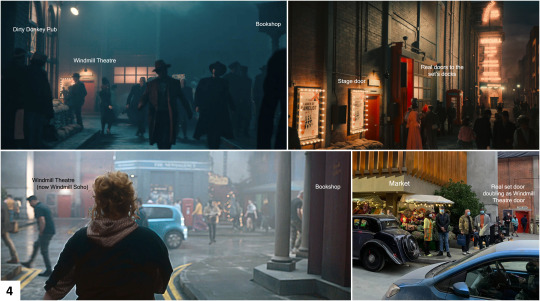
Part 1 | Part 2 | Part 4
#good omens#good omens 2#good omens 3#good omens 2 set#good omens soho#A. Z. Fell & Co.#Bilton Scaggs#the dirty donkey#mrs. sandwich#will goldstone's magic shop#Mr. and Mrs. Cheng#Waldour st#Windmill theatre
167 notes
·
View notes
Text

1986 Pontiac Grand Prix 2+2
It is often said that racing improves the breed, and the move by Formula One to a hybrid drivetrain has seen the equivalent technology in road cars evolve at an unprecedented pace. Manufacturers will always seek what is commonly called “an unfair advantage,” exploiting the rule book to its outer limits to extract greater speed from their racing models. It was against this backdrop that Pontiac released its 1986 Grand Prix 2+2. It was developed as a homologation special for NASCAR competition and only graced showrooms for one year.

NASCAR competition has evolved into a sport featuring control underpinnings and exterior panels that are almost identical across all participating brands. Today’s cars share little with their predecessors, and the term “stock car” has a reasonably loose meaning. Earlier generations were based upon showroom models, and it was against this backdrop that cars like the Chevrolet Monte Carlo Aerocoupe and the Pontiac Grand Prix 2+2 emerged. General Motors sought aerodynamic and downforce improvements for their participating models, and smoothing the airflow across the body and rear spoiler achieved this without introducing additional drag. Wholesale sheetmetal changes weren’t warranted, but adding a fastback-style back window achieved the goal at a reasonable cost. The cars weren’t the most elegant on the planet, and the reduced trunk opening to accommodate the changes reduced practicality. Still, the Aerocoupe and 2+2 proved effective on superspeedways like Daytona and Talladega. Pontiac released 1,118 examples of the Grand Prix 2+2 to qualify for NASCAR competition, with all finished in a combination of Silver and Gray. The history of this car is unclear, but it presents exceptionally well for its age. The paint retains a healthy shine, while the plastic and graphics are excellent. Dealers sold the 2+2 at a premium price, but the extra cost didn’t guarantee that these classics would lead an easy life. Many owners drove them hard and fast, and it is common to see dilapidated and rusty examples appearing in the classic market. This car has avoided that fate and would turn more heads today than in 1986.


Pontiac considered the Grand Prix 2+2 to be a muscle car, although the 165hp and 245 ft/lbs of torque produced by its 305ci V8 doesn’t hint at anything special. Buyers received a four-speed 200-4R automatic transmission and a 3.08 rear end as standard fare, with no manual option to improve performance. The ¼-mile ET of 17 seconds perfectly demonstrates the depths of The Malaise Era. While that figure looks modest by modern standards, it was what buyers expected during that period. The situation would improve in the future, but it is sobering to consider that you can drive a four-cylinder family sedan or hatchback off the showroom floor today that could show this Grand Prix a clean set of heels.

The Pontiac Grand Prix 2+2 was a one-year-only model sold in limited numbers. I don’t find these the most attractive cars on the planet, with Chevrolet achieving better aesthetic results with its Aerocoupe. However, beauty is in the eye of the beholder, and you might find yourself irresistibly drawn to this classic. I respect that if it is the case because it is a car that would still draw crowds thirty-eight years after it rolled off the line. Evolving racing rules mean we will probably never see similar vehicles in the future, and owning this Grand Prix would be a link to the company’s motorsport heritage.
88 notes
·
View notes
Text
I think there are three large classes of socialist concern, which are not reducible to each other and which require different types of solutions. I would describe them as follows:
Distributional concerns — Markets tend towards inequality, and thus even in times of abundance fail to allocate resources to people who need them.
Concerns over autonomy — Private control of resources, especially when it is highly concentrated, comes at the cost of the autonomy of those who don't control the resources. As a significant special case of this, private control of the means of production deprives workers of autonomy over their own work, which constitutes most of their waking lives. Concentration of property in the hands of the few leaves most people with no choice but to sell their labor, turning them into workers deprived of autonomy in the above sense.
Humanistic concerns — Markets optimize for specific outcomes and, furthermore, the desirable properties of market economies are predicated on the existence of firms which optimize for profit. In both cases these optimization procedures are premature; they do not factor in the full human condition and thus come at the cost of many things which people find desirable.
In my view, a successful socialist program must at least attempt to address all three of these concerns. Often when debating other socialists, I feel that they err by focusing on some of these concerns to the exclusion of the others.
I have listed these concerns in order of how difficult I believe them to be to solve. Concern (1) can, in fact, be solved relatively easily even within a liberal economic system, by implementing massive redistributive taxes that equalize wealth. I want to stress that this proposal is still radical by the standards of any nation on earth today, but a solution is easy to imagine. And all these problems are interrelated; solving (1), for instance, would go a long way towards remedying (2).
Concern (2) can also, I think, be solved or at least greatly mitigated under a market framework, though not a classical liberal one. Replacing private firms wholesale with worker co-ops would go along way towards addressing (2), and in combination with the above solution for (1) provides I think the easiest to conceptualize vision of what a workable socialist (socialist enough) economy might look like.
Concern (3) is by far the hardest to address—it is in essence just the alignment problem as applied to economic systems. Suffice it to say, the problem remains open.
A common theme I see in debates between certain (usually more liberal-leaning) practically-minded socialists and certain (usually more radical) utopian-minded socialists is that the practical socialist will propose some solution that aims to address (1) and (2), and the more utopian-minded socialist will respond with vague and often not particularly coherent accusations of insufficient radicalism. The practical socialist will often then reply by dismissing the utopian's criticisms as nothing but hot air, as unserious radical posturing. But I think this represents an unfortunate misunderstanding. That utopian is often pointing at something real, even if it is articulated in a way that offends more pragmatic sensibilities. Concern (3) touches on every part of human life, I think it's fair to say, and though the habit of incoherently blaming everything that goes wrong on capitalism is not that useful, it doesn't point at nothing.
The alignment problem is not solved in the general case, but there are things we can change about a system to try and make it more aligned with specific, known goals. So the job of a good socialist (or really, anyone interested in any kind of political reform) should then be to listen to the ways in which people are dissatisfied with their lives, even when articulated poorly, and try to accrue an understanding of the most recurrent and significant ways in which the present system fails to satisfy people. Then you can look for specific tweaks that will more readily accommodate the things people in fact seem to want. But crucially, this task in empirical—you cannot come upon the most desirable tweaks rationally. It's also empirical in a way that is difficult to approach with any kind of scientific rigor. You have to listen to people, and try to understand them on their own terms. You have to try to understand where people are coming from even if they phrase things in a way that you very much dislike, a way that irritates you or makes you feel threatened.
As I've said before, "listen to marginalized voices" is oft-misused, but not actually incorrect as a description of the practical obligations of anyone who wants to consider themself a leftist.
202 notes
·
View notes
Text
The introduction of Earthmate dancers for Project Dragon has got me thinking again about the rf5 siblings and their abilities when it comes to being Earthmates.
I also realize that I haven't talked much about how their farms are going lately. So let's go into detail about our last pair of farming Earthmates before they all go extinct.
So we've got the main farm behind the Silo that both Alice and Ares tend to.

On the main farm Ares mostly helps by clearing and tilling the ground before the seeds go in.
Quiet often, Reinhard stops by and helps him out with the work. (He also helps out a lot at with one certain farm dragon but we'll address that later)

This happens much to Alice's dismay because she feels that she absolutely needs to pay him for his assistance but has to fight him to take the money when he tries to refuse.
His argument is that he just felt like helping his friend on a whim and doesn't want money to be involved but Alice doesn't budge. He worked and needs to be compensated for it.

When the land preparation is done Alice takes over the planting process. She harvests seeds to max level, has all the best fertilizers and keeps careful eye on them every day to produce the best crops!
She does all of the plant work either by herself or with Ares' help because their Earthmate touch is what makes the plants grow fast and in good quality.
They've tried having others help them with the planting part but results of an Earthmate's touch practically negate the second anyone else tends to a plant. It's like all the magic just vanishes.
On a different note, Cecil likes to come and help observe/take notes cuz he's really into earth and ocean sciences. So any learning opportunity is a good opportunity. Plus he has a good eye for detail and catches things that Alice should be weary of with her plants. She also gives him a salary for regularly assisting in plant inspection.

Last thing about the main farm. While it does make use of the shipping bins to wholesale the bulk of the produce to Misa's shop as well as other shops in nearby towns, Alice also has a farmer's market set up next to the Silo. Here is where she has the on-rotation Rangers take shifts selling the highest quality produce at her assigned rates.

Basically Alice is running a rather expansive farming business alongside her work as a Ranger.
I have a lot of concept art I wanna make for the dragon farms (especially the dark orchard) so I'm going to do another post later for Ares and the farm dragon friends that he's made.
#rune factory 5#rune factory#rf5#Rigbarth earthmate and farming fun facts#workshopping the name but might make another subsection where I just add details to farming and other venture related stuff for the siblings#aashi doodles
36 notes
·
View notes